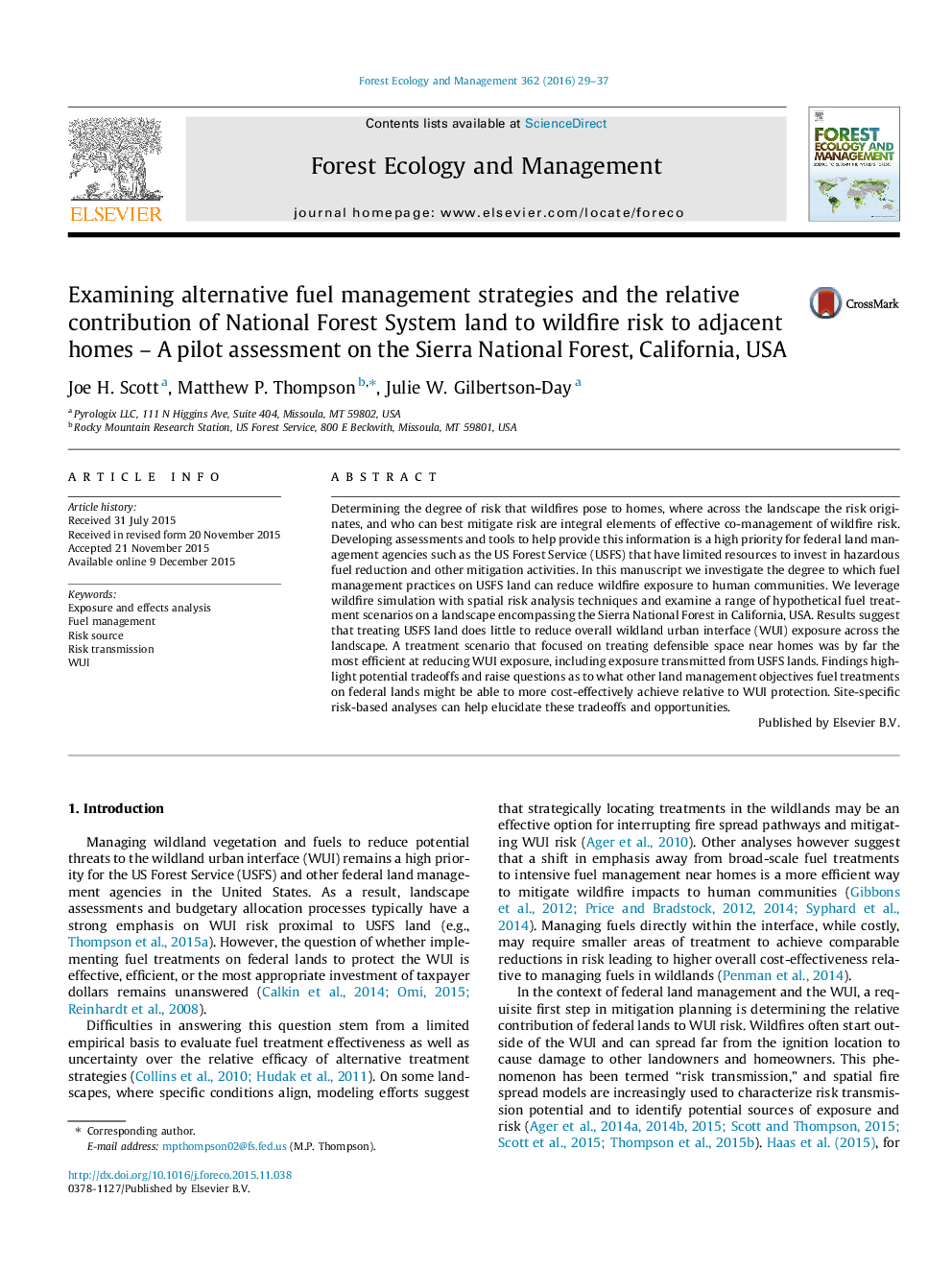| کد مقاله | کد نشریه | سال انتشار | مقاله انگلیسی | نسخه تمام متن |
|---|---|---|---|---|
| 85969 | 159155 | 2016 | 9 صفحه PDF | دانلود رایگان |
• We consider how fuel conditions contribute to fire spread and WUI exposure.
• We use simulated fire perimeters and ignition locations to quantify WUI exposure.
• We generate and examine a range of hypothetical fuel treatment scenarios.
• Defensible space treatments were most efficient at reducing exposure.
• Pre-fire landscape assessment helps design efficient fuel treatment strategies.
Determining the degree of risk that wildfires pose to homes, where across the landscape the risk originates, and who can best mitigate risk are integral elements of effective co-management of wildfire risk. Developing assessments and tools to help provide this information is a high priority for federal land management agencies such as the US Forest Service (USFS) that have limited resources to invest in hazardous fuel reduction and other mitigation activities. In this manuscript we investigate the degree to which fuel management practices on USFS land can reduce wildfire exposure to human communities. We leverage wildfire simulation with spatial risk analysis techniques and examine a range of hypothetical fuel treatment scenarios on a landscape encompassing the Sierra National Forest in California, USA. Results suggest that treating USFS land does little to reduce overall wildland urban interface (WUI) exposure across the landscape. A treatment scenario that focused on treating defensible space near homes was by far the most efficient at reducing WUI exposure, including exposure transmitted from USFS lands. Findings highlight potential tradeoffs and raise questions as to what other land management objectives fuel treatments on federal lands might be able to more cost-effectively achieve relative to WUI protection. Site-specific risk-based analyses can help elucidate these tradeoffs and opportunities.
Journal: Forest Ecology and Management - Volume 362, 15 February 2016, Pages 29–37
